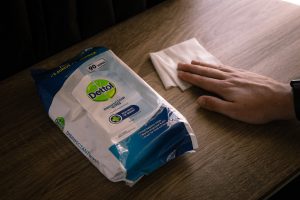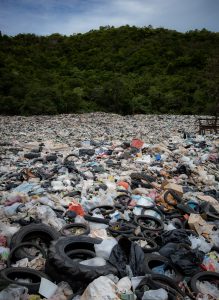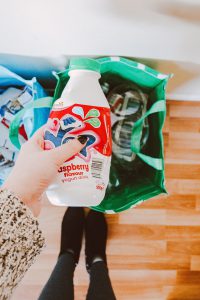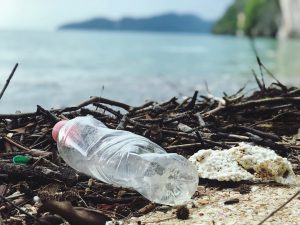Ah, spring. It’s the time of year that we think about love…well, love AND cleaning. While the former might be pleasant to ponder, the latter, not so much. It’s not a favorite way to spend free time for most people – in fact, the never-ending job of cleaning can almost make you feel like throwing in the dusting cloth. Almost. Because, hey, we keep coming back to our household chores, and we know that we need to get them done so that we can relax in a fresher, tidier, and healthier environment. Before you decide it’s time to get to work, though, think about whether your cleaning habits are as effective as they can be. You might have a few bad cleaning habits that need to be broken in order to make the most of your cleaning time so you can get – and keep – your house at its best. Never fear, we’re here to help! Take a look at our suggestions below, try to change one or two habits a week, and you’ll be on your way!
1. Not Having a Cleaning Plan

Any good general heading into a war knows that they need to have a plan. If you’re fighting the battle of the dustbunny, you need to go in with a clear idea of where to start and how to progress. For example, we suggest cleaning from top to bottom, and from left to right. Think about it: if you clean your dresser, then the ceiling fan, you’re setting yourself up to have to go back and re-clean, and nobody wants that. Try this cleaning order: light fixtures, walls, window sills, furniture, floors/baseboards.
2. Binge Cleaning
If you’ve got a cleaning plan in place, great – but that cleaning plan shouldn’t involve frantically working for an entire weekend. Save the binging for your favorite streaming show! Cleaning in this way will only lead to shortcuts as you try to cram every task into one day, and will end up wearing you out. And what happens when you’re worn out after a crazy cleaning session? You’ll end up frustrated and annoyed that you spent so much time cleaning, and will be more likely to neglect the little cleaning jobs that start piling up again. Instead, try to make a realistic cleaning schedule that you’re likely to stick to, take a few minutes each day to stay on top of necessary jobs, and spend your weekends in more enjoyable ways!
3. Using Disinfectant and Wipes Incorrectly
Are you confusing disinfectants and cleaners? If you’re trying to clean and disinfect surfaces in your kitchen or bathroom, for example, and you’re using these two products interchangeably, your house is not going to be as clean as you think it is. Using disinfectants improperly will mean that all of those germs you thought you were cleaning are still there. Cleaners simply remove dirt, disinfectants are meant to, well, disinfect. To use them properly, wipe the surface down to get rid of the dirt, debris and grime that can overwhelm a disinfectant’s capabilities, then spray to disinfect. Another mistake that people often make with disinfectants? Not reading the instructions on the label. Most disinfectants need to sit on a surface for 3 to 10 minutes to be effective.
While we’re on the subject of disinfectants, are you a fan of those handy little wipes? They can definitely cut down on cleaning time, and are a good option for giving your bathroom a quick spruce up in the morning, but be careful how you use them. If you’re using one wipe to clean an entire bathroom, by the time you get to your toilet, the wipe will be out of disinfectant, and you’ll just end up spreading germs around. Here’s a bonus tip: check out YouTube for hacks to make your own more cost-effective, healthier version of disinfecting wipes!
And remember: bleach is ok for things that need to be seriously disinfected, but it’s a harsh and harmful chemical, and is not meant to be a dirt or grime remover.
4. Cleaning with Dirty Tools
Just as you shouldn’t be overusing your disinfecting wipes, you also shouldn’t be cleaning with tools that haven’t been cleaned themselves since before the age of the internet. If your washing machine is stinky from bacteria build-up, you’ll have stinky clothes. If your vacuum cleaner is filled with dust, it’ll have a hard time sucking up any dirt. If your sponges have been lying around in your sink and are covered in residue, they’ll just end up pushing around germs and grime.
Rinse cleaning cloths often with clean, hot water; disinfect sponges and replace them regularly; pull threads and hairs out of your vacuum cleaner, empty the bag (and remember to replace them and the filter regularly), and wipe it down; and wash broom and mop bristles and let them dry thoroughly. There are also dedicated products for cleaning washing machines and dishwashers, but also don’t underestimate the cleaning and freshening power of white vinegar!
5. Using Too Much Product

Using dirty tools is a no-no, but on the other hand, are you thinking that the more cleaning product you use, the better? Nope. Using too much cleaner or detergent can actually do more harm than good, not to mention the fact that you’ll be wasting money on cleaning supplies and water to rinse away the excess. If an excess of cleaning product is not rinsed away completely, the residue becomes a dirt magnet, trapping soil. Read the directions on each product and stick to the recommended amounts.
6. Forgetting the Little Things
After a while, it gets pretty tough to ignore a toilet you haven’t cleaned. And those dust bunnies rolling past you like tumbleweed are begging to be swept up. But don’t forget all those little surfaces that get touched a lot and can be harboring tons of germs and grime. Think light switches, doorknobs, and kitchen cabinet and drawer handles. When it comes to cleaning, there are no small parts, only small actors, as they say, so walk around with a wipe or soapy cloth whenever you can to keep those little guys sparkling clean.
One more note regarding forgotten spots that might need cleaning: remember to give those out of sight, out of mind places, like the inside of your microwave, some love, too. Yes, wipe that handle and those buttons down, but don’t forget that grimy inside! If you’ve got a caked-on nightmare in there, just put a bowl of lemon juice, water, and white vinegar inside, warm it up for two minutes and then wipe away the mess.
7. Letting Things Slide

We get it, life is busy and sometimes those little, annoying things fall by the wayside. Mail and papers pile up, neglected, on the dining room table, dishes pile up in the sink, laundry sits unfolded, food gets left out on counters. But all of those little messes can add up to one big, overwhelming mess. Some little things, like food and toothpaste splatters can get harder and more time consuming to clean the longer they sit, leading to wasted time. Food and dirty dishes left out can cause odors and attract bugs, pantry moths, and rodents, which will only lead to more aggravation and wasted time and energy as you try to get rid of them.
Don’t do that to yourself! Don’t make cleaning worse than it has to be; try and stay on top of it and you’re less likely to get overwhelmed. For smaller things, do quick cleanups as you go. For slightly bigger tasks, again, stick to a cleaning schedule that includes a few chores a day. For things that accumulate, like papers, have a dedicated place to put mail and get to it at least once a week, file important papers, take pictures of children’s artwork and frame the most special pieces, and remember to keep a shredder or recycling bin handy to get rid of papers that don’t need to be hanging around!
Cleaning. It’s no one’s idea of a great time, it’s just one of those things that’s got to be done. But it doesn’t need to be an overwhelming task! Keep on top of things as much as you can, and follow the simple tips above to make sure that you’re making the most of your cleaning time and supplies. Then get back to relaxing in a house that always feels ready for spring (and don’t worry, we won’t tell if you drop some popcorn on the floor while doing the right kind of binging).




